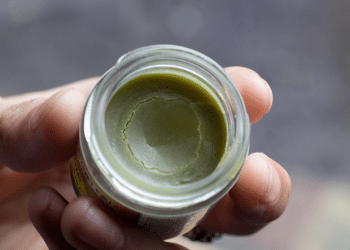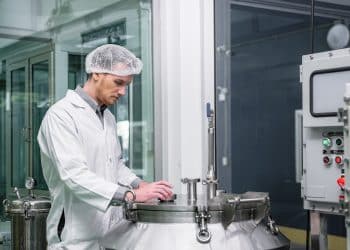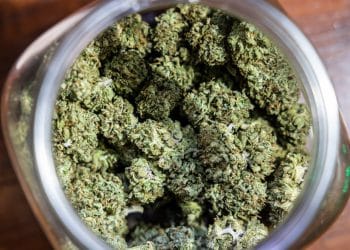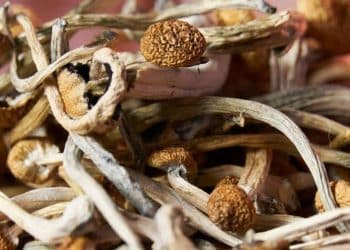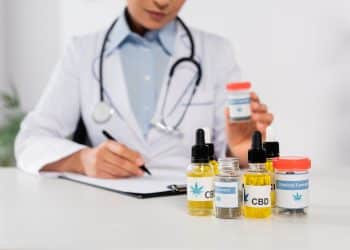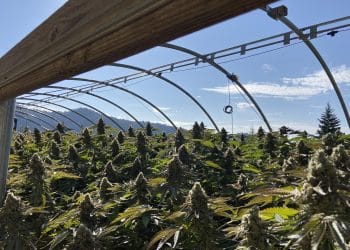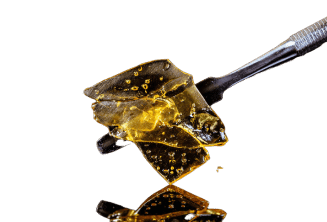Worldwide, Cannabis laboratories are positioned to be a billion-dollar industry, with regulations and international standards always more strict and aligned with the food, chemical and pharmaceutical industries. With the focus on the health and safety of consumers, different cannabis techniques allow to measure solvent residues, harmful substances and the exact quantity of active compounds present in the final plant-derived product.
To make an example, in the USA, federally legal hemp crops are obliged to provide a Certificate of Analysis (COA) document proving the cannabinoids content of the plants, as well as microbial and pesticides analysis. In this document the precise amount of tetrahydrocannabinol (THC) is highlighted in order to prove that the plant and the extract are within the regulatory limits of 0.3%.
Growers and manufacturers producing medical cannabis and derivatives with high content of THC have to provide analyses of cannabinoid levels, microbial amount, pesticides residues, mycotoxins and heavy metals for public health and safety.
Biomass samples for testing are often ground to a homogeneous consistency to allow a consistent and reliable analysis. Edibles are also cut and finely powdered while extracts are diluted in order to avoid oversaturation of the testing machinery and out-of-scale analyses.
Chromatographic Methods
Chromatography is the process of separating a complex mixture in single components. The sample is dissolved into a solvent and this mobile phase is passed through a column containing a stationary phase. Depending on the interaction established with the phases, compounds will be separated and eluted at different times from each other. A detector will be used to transform the amount of each component into a signal. Each signal will be specific for a certain chemical compound and can be used to quantify it.
Depending on the kind of solvents used different types of chromatographic methods exist including: liquid chromatography, gas chromatography or supercritical fluid chromatography. In the case of liquid chromatography, a UV light can be used in order to detect the presence in the sample of conjugated organic molecules such as cannabinoids, or the presence of metals among other molecules.
High Pressure Liquid Chromatography (HPLC)
This method is the most popularly used for cannabis and hemp testing. The sample is separated into its constituents by distributing between the mobile phase (a flowing liquid) and a stationary phase packed inside the column. Depending on the kind of mobile and stationary phases used it is possible to isolate certain substances instead of others. Among the kind of liquid chromatography there are:
- Reversed-Phase;
- Normal Phase;
- Ion Exchange;
- Size Exclusion.
Depending on the kind of analytes, it is possible to use different detection methods ranging from the spectrum area ultraviolet (UV) to the visible (Vis) regions in the 190 – 900 nanometer (nm) wavelength range. For natural products analyses, it is common to monitor 220 nm and 274 nm to determine analytes of interest.
Liquid Chromatography / Time-of-Flight / Mass Spectrometry (LC/TOF/MS)
Known as the most high-resolution solution for scientific research laboratories. This technique combines the selectivity of the chromatographic techniques with the selectivity/specificity of the mass spectral identification using charged particles. The complexity of some environmental samples can be solved through this technique by the accurate analysis of mass measurements of protonated samples and the calculation of the mass to charge ratio (m/z). TOF mass analysis generates increased resolving power of signals on the m/z axis in comparison to other quadrupole mass spectrometers. [2]
Fourier Transform Infrared Chromatography
This technique is used to obtain an infrared spectrum image of the data associated with absorption or emission of a solid, liquid, or gas. A FTIR spectrometer simultaneously collects high-resolution spectral data over a wide spectral range of elements and components.
Gas Chromatography Flame Ionization (GC-FI)
Widely used as the quickest form of elemental test results. Liquid samples are vaporized and sent through a gas chromatograph where they are then burnt with an high intensity flame that ionizes compounds before leading them through the detector. The detector diodes measure the current or flow of substances which are translated into a chromatograph.
Spectroscopic Methods
The electromagnetic spectrum is a primary analytical tool to highlight the electronic structure, physical structure and composition of a given sample. Many kinds of spectroscopy can be used in chemical analysis including:
- Atomic spectroscopy;
- Infrared;
- Ultraviolet and visible;
- Raman;
- Nuclear magnetic resonance.
In a typical spectroscopic analysis, a concentration of a few parts per million of a trace element in a material can be detected through its emission/absorption spectrum.
Atomic Absorption Spectroscopy (AAS)
This technique is used for the qualitative and quantitative analysis of chemical elements present in environmental or biological samples by measuring the absorbed radiation by the chemical element of interest. This method can also determine the concentration of metals while detecting over 70 separate elements in both solid and dissolved samples.
Inductively Coupled Plasma Mass Spectrometry (ICP-MS)
This method ionizes elements using inductively coupled plasma. Ions are sent through a mass spectrometer and analyzed for the m/r ratios. This method, compared to AAS has greater sensitivity, precision and speed.
Inductively Coupled Plasma Optical Emissions Spectroscopy (ICP-OES)
This technique is faster and more accurate than AAS. Moreover, it is generally a cheaper option than ICP-MS. This machinery operates using ICP energies to excite the elements present in the sample, forcing them to emit photons of a characteristic wavelength. By measuring the brightness and wavelength light that is emitted, it is possible to identify and quantify the analytes present.
Wrap Up on Testing Methods
Testing in laboratories which are vetted certified laboratories is a necessary building block of validation in plant extractions and product development. Unfortunately often testing facilities falsify results at the request and payment of irresponsible business agents. This practice must be stopped and governed by standards to preserve the health and safety of consumers. Risk management for laboratory analyses should be audited regularly. For this reason it is always recommended to ask reliable third party labs to perform the analysis and to always ask the COA of the products we buy.
References:
[1] Atapattu SN, Johnson KRD. Pesticide analysis in cannabis products. J Chromatogr A. 2020 Feb 8;1612:460656. doi: 10.1016/j.chroma.2019.460656. Epub 2019 Oct 24. PMID: 31679712.
[2]Imma Ferrer; E.Michael Thurman (2003). Liquid chromatography/time-of-flight/mass spectrometry (LC/TOF/MS) for the analysis of emerging contaminants. , 22(10), 750–756. doi:10.1016/s0165-9936(03)01013-6

